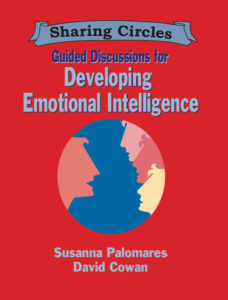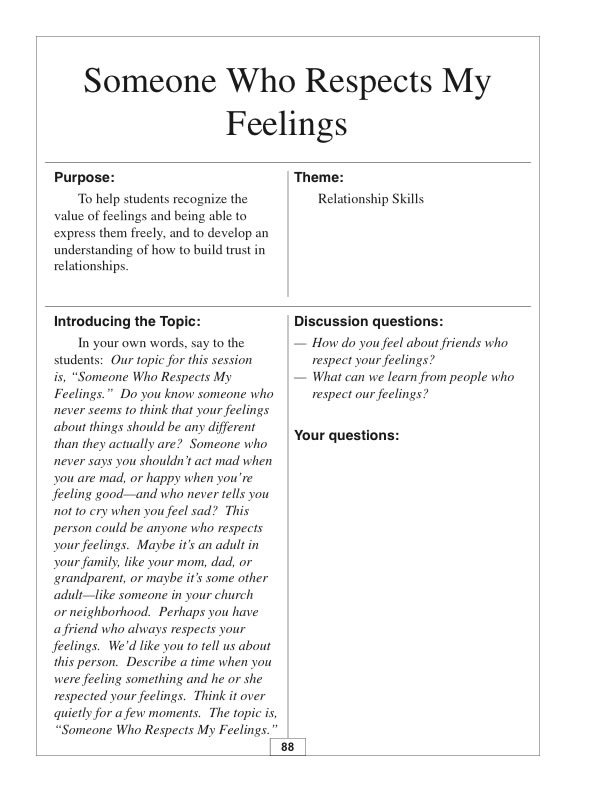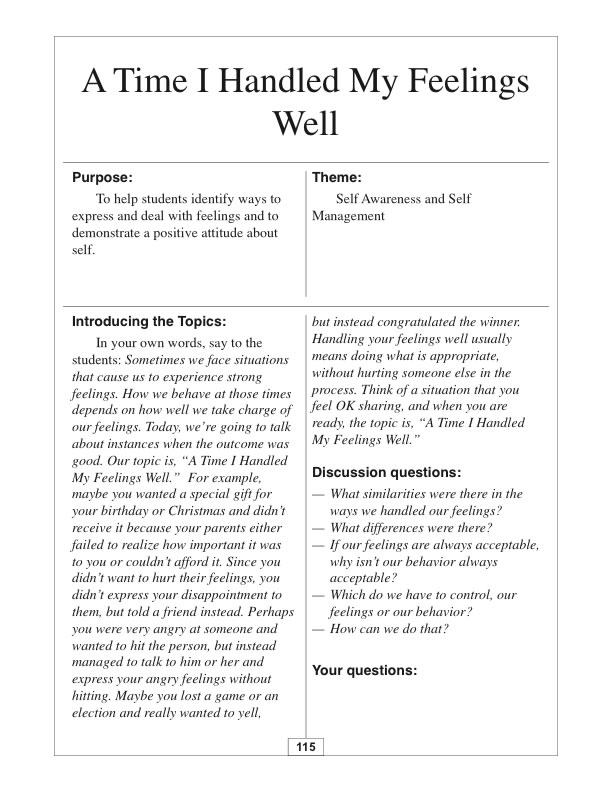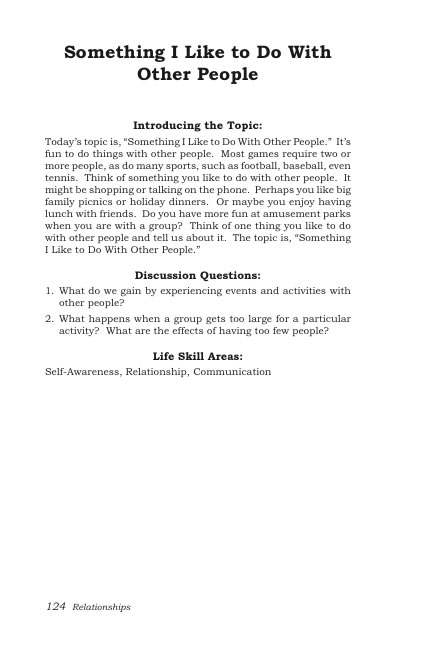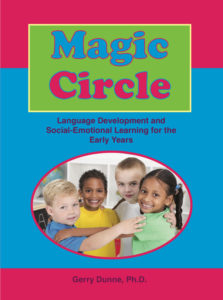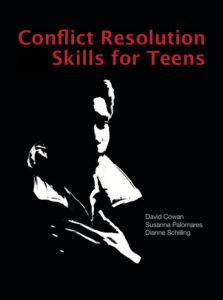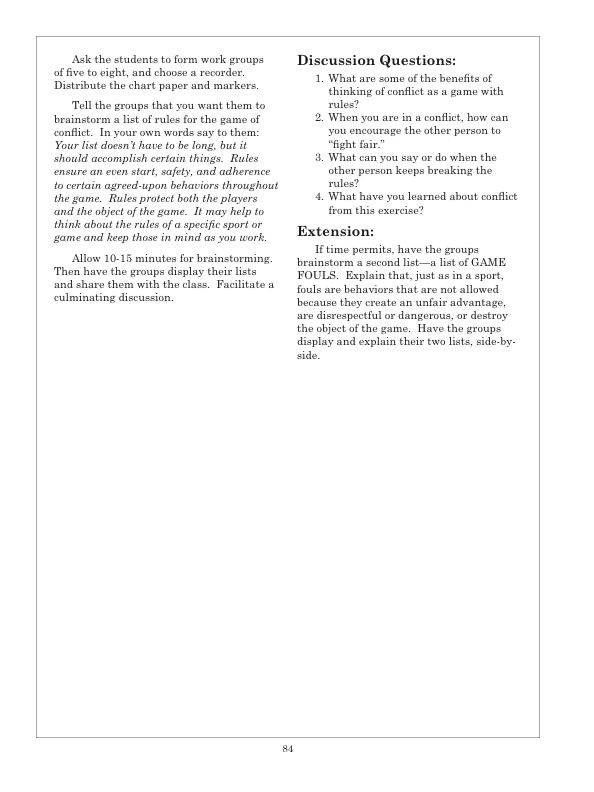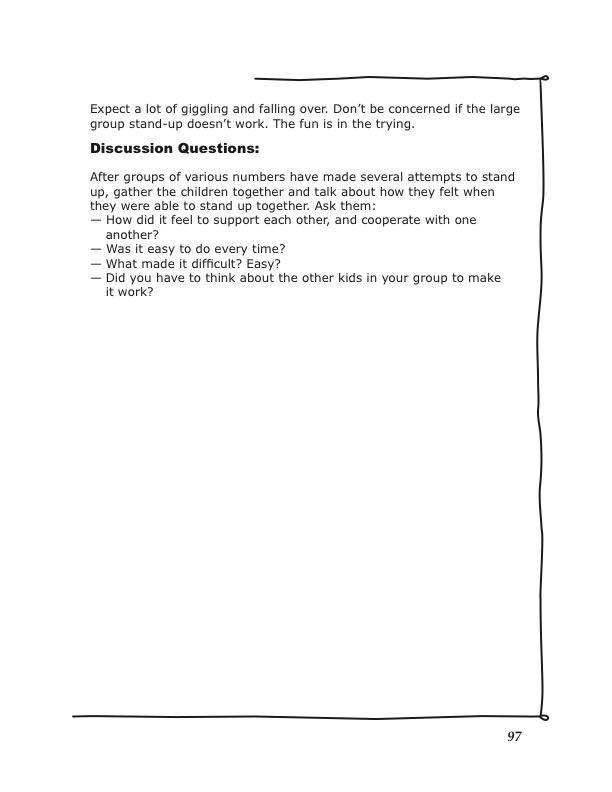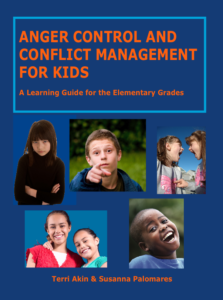Shaping Self Esteem
Students who believe in themselves, perceive themselves as being “OK,” and are not debilitated by knowledge of their weaknesses are considered to have a healthy degree of self-esteem and a sense of mastery or self-confidence. They try new challenges and do not strongly fear failure. It is likely that they have experienced success more than failure, and probably when they were successful, a significant person noted it and commented on it to them.
The ways in which significant others respond to what we do plays a critical role in whether or not we see ourselves as masterful. If others let us know they recognize our efforts and comment positively when we try or succeed, our awareness that we do have capabilities increases. Conversely, without favorable comment we are less aware of our capabilities, even if we experience success.
The Importance of Sharing Circles
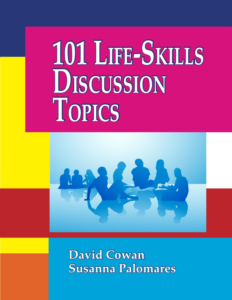
Through participating in Sharing Circles, students are routinely encouraged to explore their own endeavors and successes, and hear positive comments about their efforts. All the topics are designed to heighten students’ awareness of their own and others’ successes. Failure is a reality that is also examined. The objective, however, is not to remind students that they have failed; instead Sharing Circles enable them to see that falling short is a common, universal experience.
Comparisons and judgments are not made. The circle is not another competitive arena, but is guided by a spirit of cooperation. When students practice fair, respectful, noncompetitive interaction with each other, they benefit from the experience and are likely to employ these responsible behaviors in other life situations.
 Here’s Your Sharing Circle. Enjoy!
Here’s Your Sharing Circle. Enjoy!
Do you want more information?
• Leading a Sharing Circle
• Sharing Circle Rules
• Books and Resources
• Free Activities
• Subscribe
Go here:
Here’s How It’s Done
Gather everyone into a circle. Explain the rules for sharing, and get agreement from everyone that they will follow the rules.
Sharing Circle Rules:
- Everyone gets a turn to share, including the leader.
- You can skip your turn if you wish.
- Listen to the person who is sharing.
- There are no interruptions, probing, put-downs, or gossip.
- Share the time equally.
After everyone has shared, who wants to share, ask the discussion questions.
You can check the book out HERE.
Just click HERE to open a fully reproducible PDF of this activity and experience sheet…
If you like our blog resources and would like to receive them regularly, please subscribe here or on our website at www.InnerchoicePublishing.com
If you are already a subscriber, I hope you find this activity valuable. Help us grow our blog by sharing these activities and encouraging others to join. Thank you.
Thanks so much for reading!
Susanna
[New Post] Helping Kids Manage Fear
We hope you’re having a terrific spring. Today’s activity and Experience Sheet are from a book about three formidable feelings, grief, fear and anger.
The Reality
Children cannot be protected from them and they can’t be immunized against them. At various points in their young lives, they will suffer the loss of goals, hopes, dreams, friendships, pets and people. They will fear failure, abandonment, punishment, rejection and countless real and imaginary threats to their safety and security. And there will be no ducking their wrath. They will spend countless hours reacting in anger to siblings, peers, authority figures and themselves.
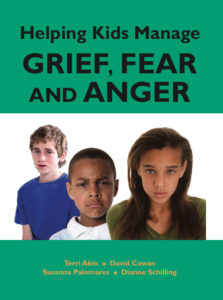
Grief, fear and anger are significant emotions, so weighty in fact that they often drive children to think irrational thoughts and engage in unreasonable behaviors. Such responses left unchecked can easily spiral into destructive actions. If we want children to succeed in life, we must equip them with the tools to manage these intense feelings. Grief, fear and anger are annoyingly persistent companions, popping up regularly throughout life.
Taking a Step in the Right Direction
This week’s activity comes from the book Helping Kids Manage Grief, Fear and Anger. The activities, discussions, role plays, simulations and worksheets presented in this book are designed to help children explore, understand and express their feelings in safe and acceptable ways. Easy-to-understand explanations coupled with skill practice promote healthy responses to intense and sometimes overwhelming emotions. Children become more centered and focused, communicate more effectively, and demonstrate greater interdependence and understanding.
Here’s Today’s Activity and Experience Sheet
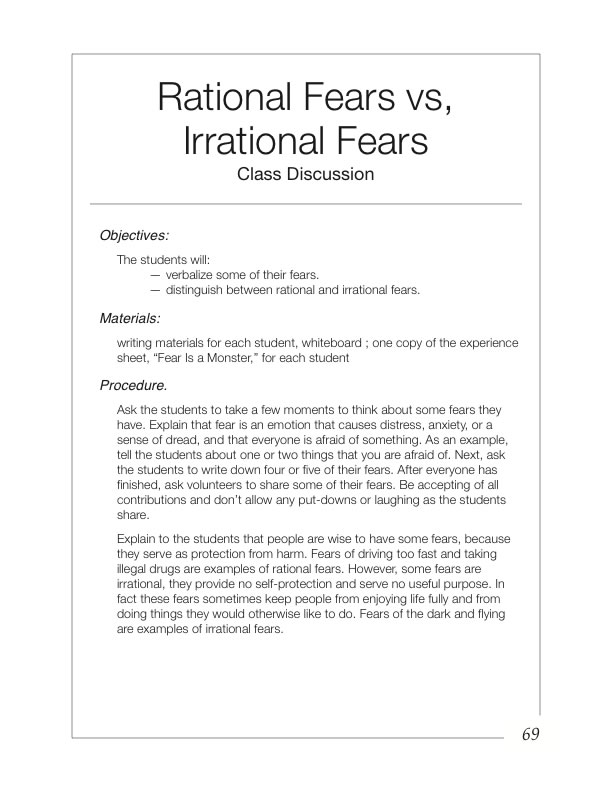
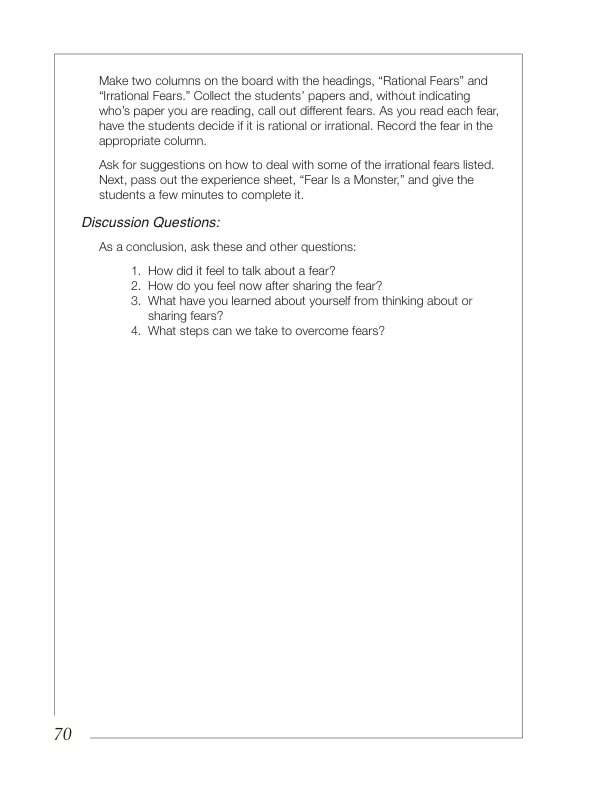
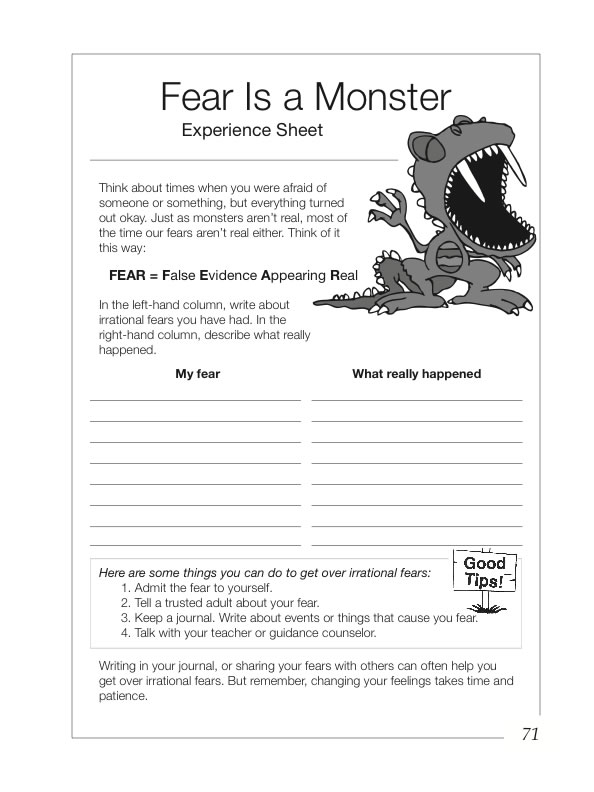
You can check the book out HERE.
Just click HERE to open a fully reproducible PDF of this activity and experience sheet…
If you like our blog resources and would like to receive them regularly, please subscribe here or on our website at www.InnerchoicePublishing.com
If you are already a subscriber, I hope you find this activity valuable. Help us grow our blog by sharing these activities and encouraging others to join. Thank you.
Thanks so much for reading!
Susanna
[New Post] Recognizing the Importance of Feelings to Learning
Recognizing the Importance of Emotions and Feelings
Try this little exercise. On a blank sheet of paper draw a line down the center. Label the left side Feelings, and the right side Actions. On the left side, write a list of as many of the feelings you can remember that you’ve had today. Leave a few spaces between the words. You may think of a feeling you had in traffic getting to school, or a response to a student, etc. Take only a minute to write this list of feeling words.
Now move to the action side. Pick out one positive feeling you wrote, and opposite it in the action column, write what you remember you did in response to that feeling. You may have laughed, said thanks, etc.
Next, pick one feeling that was not pleasant and write down what you did.
Now, pick out the feeling that made you most uncomfortable and write down what you did.
Can you see how absolutely our actions are connected to our feelings? We all respond to our feelings, not in the exact same way, but we all do respond. Our feelings flow from our emotions. All people have the same emotions. Things like love, hate, fear, etc. The feelings people have as they experience these emotions can vary as can their behaviors in response to these feelings. Emotions generate our feelings, and our feelings are messages that tell us that we are experiencing an emotional event. It is what we do in response to these feeling messages that is a measure of our emotional intelligence.
The Impact of Emotional Intelligence
Because of their connection to behavior, emotions impact every area of life: health, learning, achievement, and relationships.
Managing feelings well and recognizing and responding effectively to the feelings of others enables students to lead happy and productive lives and to master habits of mind that contribute to personal and career success. We all, parents and educators, must nurture emotional intelligence in the same caring way we nurture IQ.
Think for a minute about the implications of this to what students need to learn – to what we need to teach. What a gift we give to students when we help them learn to channel their feelings into positive behaviors and developing self control.
Here Are Your Sharing Circle Lessons
Today’s Sharing Circle topics come from the K- 12 book, Guided Discussions for Developing Emotional Intelligence. Sharing Circles are a superb tool for helping students to identify, understand, and manage their feelings, and this book has over 100 Sharing Circle lessons. The topics are, Someone Who Respects My Feelings and A Time I Handled My Feelings Well.
 Here’s Your Monday Morning Sharing Circle. Enjoy!
Here’s Your Monday Morning Sharing Circle. Enjoy!
Do you want more information?
• Leading a Sharing Circle
• Sharing Circle Rules
• Books and Resources
• Free Activities
• Subscribe
Go here:
Here’s How It’s Done
Gather everyone into a circle. Explain the rules for sharing, and get agreement from everyone that they will follow the rules.
Sharing Circle Rules:
- Everyone gets a turn to share, including the leader.
- You can skip your turn if you wish.
- Listen to the person who is sharing.
- There are no interruptions, probing, put-downs, or gossip.
- Share the time equally.
After everyone has shared, who wants to share, ask the discussion questions.
You can check the book out HERE.
Just click HERE to open a fully reproducible PDF of this activity and experience sheet…
If you like our blog resources and would like to receive them regularly, please subscribe here or on our website at www.InnerchoicePublishing.com
If you are already a subscriber, I hope you find this activity valuable. Help us grow our blog by sharing these activities and encouraging others to join. Thank you.
Thanks so much for reading!
Susanna
[New Post] Journal Writing Boosts SEL and Academic Skills
Why a Journal?
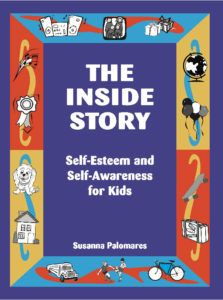
Journal writing is a vehicle for building self-awareness, personal insight, and self-esteem, and is an excellent means of developing language skills, creativity and imagination. Verbal skills, reading comprehension, and written expression are developed through regular writing, while journal drawing stimulates visual thinking and perceiving.
Encouraging students to express their feelings in the privacy of the written word allows the release of pent-up emotions that may have no other outlet. Especially in troubling times, a student can discharge in writing much of the turbulence within. Journaling can help students process emotions and move forward.
In short, a journal can be a good friend — dependable, patient, and nonjudgmental.
Your Innerchoice Resources
Today’s blog provides several journal pages taken from The Inside Story: A Journal of Self-Discovery. Intended for students in grades four through nine, it takes them on a guided tour through many of the rooms where their stories are stockpiled. It probes a few corners and brushes away the dust on a handful of memories, encouraging students to capture what they discover in journal form. Here are three different, but related, journal pages for you to try out with your students.
………………………………………………………………………..
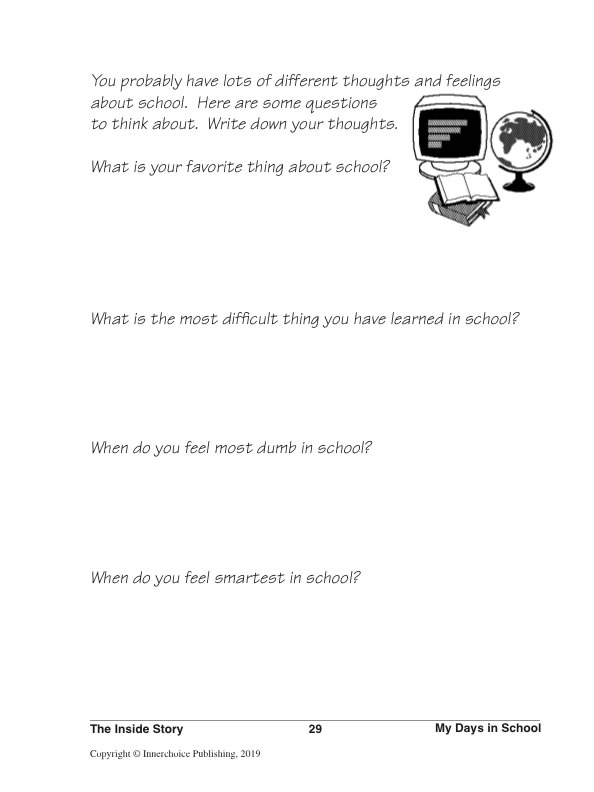
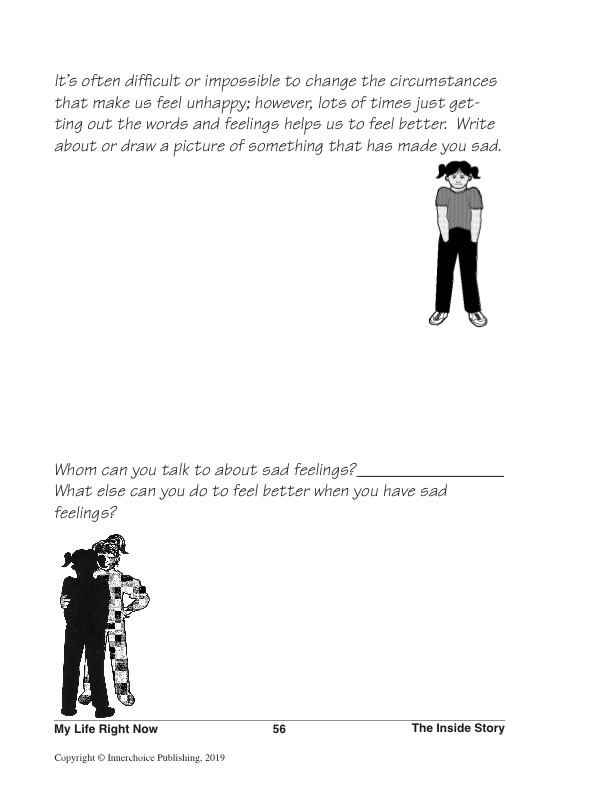

You can check the book out HERE.
Just click HERE to open a fully reproducible PDF of this activity and experience sheet…
If you like our blog resources and would like to receive them regularly, please subscribe here or on our website at www.InnerchoicePublishing.com
If you are already a subscriber, I hope you find this activity valuable. Help us grow our blog by sharing these activities and encouraging others to join. Thank you.
Thanks so much for reading!
Susanna
[New Post] The Importance of Listening to Your Students
Many of us don’t realize that by simply listening to students talk and share their inner thoughts and issues we can immensely facilitate their personal development. It’s by sharing their thoughts and feelings and experiences openly and in a non-judgmental setting that students gain important life skills and self-knowledge. Once they see that we do not intend to “change” them and that they may speak freely without being “wrong,” students find it easier to examine themselves and begin to see areas where they can make positive change in their lives. It’s through sharing and being truly listened to that students clarify their thoughts, and learn effective methods of self-expression. With this kind of true listening they are encouraged to go deeper, find their own direction, and express and face strong feelings that may at other times be hidden obstacles to their growth. The important point is that students really can solve their own problems, develop self-awareness, and learn skills that assist them in becoming responsible members of society if they are listened to effectively.
The Perfect Strategy
The Sharing Circle, which provides both the opportunity for students to be listened to, and to listen to others, is the prime teaching tool that we have developed in our curriculum guides to foster these valuable life skills in all students K – 12.
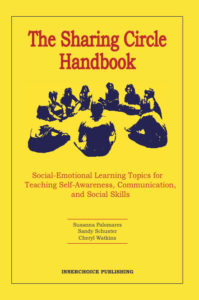
A Listening Forum
Just as the Sharing Circle provides a process for students to learn about themselves through self-expression and exploration, it also teaches students to be good listeners. The rules of the Sharing Circle (listening to the person who is speaking, without probing, put-downs, or gossip) demand that each student give active attention to the speaker. Through the regular practice of good listening by the teacher or counselor leading the circle, the students begin to internalize good listening habits.
Your Sharing Circles
Today we are providing two Sharing Circle topics designed to promote good listening from The Sharing Circle Handbook, Topics for Teaching Self-Awareness, Communication, and Social Skills for students in grades K-12. The topics are, Something I Like to Do Alone and Something I Like to Do With Other People.
 Here’s Your Monday Morning Sharing Circle. Enjoy!
Here’s Your Monday Morning Sharing Circle. Enjoy!
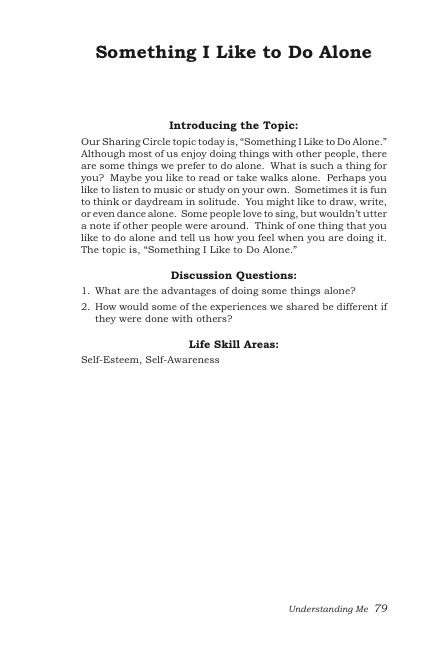
Do you want more information?
• Leading a Sharing Circle
• Sharing Circle Rules
• Books and Resources
• Free Activities
• Subscribe
Go here:
Here’s How It’s Done
Gather everyone into a circle. Explain the rules for sharing, and get agreement from everyone that they will follow the rules.
Sharing Circle Rules:
- Everyone gets a turn to share, including the leader.
- You can skip your turn if you wish.
- Listen to the person who is sharing.
- There are no interruptions, probing, put-downs, or gossip.
- Share the time equally.
After everyone has shared, who wants to share, ask the discussion questions.
You can check the book out HERE.
Just click HERE to open a fully reproducible PDF of this activity and experience sheet…
If you like our blog resources and would like to receive them regularly, please subscribe here or on our website at www.InnerchoicePublishing.com
If you are already a subscriber, I hope you find this activity valuable. Help us grow our blog by sharing these activities and encouraging others to join. Thank you.
Thanks so much for reading!
Susanna
[New Post] Language Development and Social-Emotional Learning Activity for Young Children
As small children begin to organize their worlds and translate thoughts into meaningful sentences understood by others, a sense of accomplishment develops. They realize that through language, much information can be gained about the world, and others can be influenced to respond to their needs. They also learn that language is a key to friendship.
The development of language in small children can be supported most effectively by educators and parents when they frequently converse with the children and encourage them to hold conversations with each other. These verbal experiences strengthen not only the development of language, but also thought, which contributes to the child’s ability to be more self-controlling. It is important to use concrete terms and normal inflection and pronunciation as in adult-to-adult conversation when talking to small children. They should never be “talked down” to.
How You Can Facilitate This Learning
Today’s Blog activity comes from our book, Magic Circle: Language Development and Social-Emotional Learning for the Early Years. The process we call a Sharing Circle with older students, elementary through high school, is referred to as a Magic Circle with pre-schoolers and kindergarten students. As with Sharing Circles, Magic Circles are carefully structured safe social environments wherein young children can perform tasks, express themselves verbally, and receive positive acknowledgement for these actions and expressions.
Oral language is the principle mode of expression of Magic Circles. By speaking to their fellow circle members (peers and leader) and by listening to what others have to say, children’s growing abilities to verbally communicate are utilized and strengthened. Verbal expression is then built upon to inspire other forms of expression including art, reading, singing and drama.
Here is a Magic Circle Task entitled I Can Draw a Picture of Myself and Tell You About It for you to use with your children.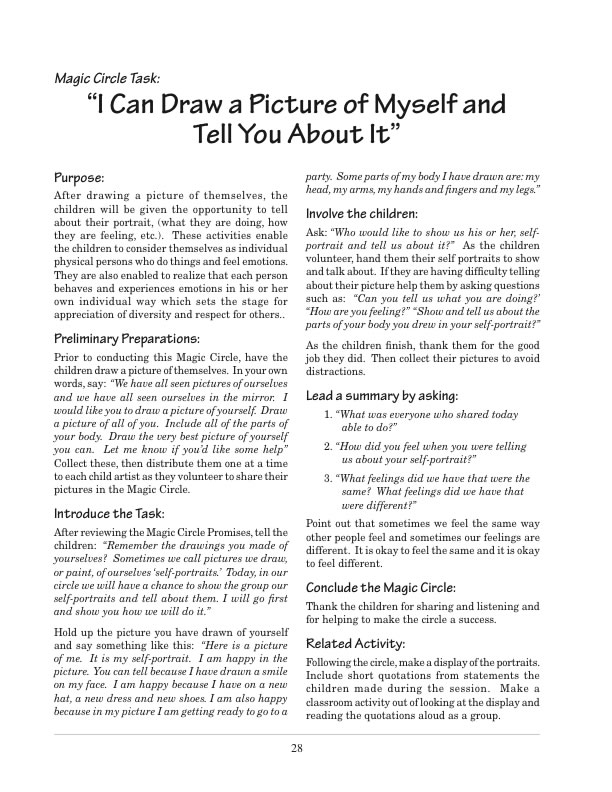
The Magic Circle has the same rules and structure as the Sharing Circle. If you want more information?
• Leading a Sharing Circle
• Sharing Circle Rules
• Books and Resources
• Free Activities
• Subscribe
Go here:
Here’s How It’s Done
Gather everyone into a circle. Explain the rules for sharing, and get agreement from everyone that they will follow the rules.
Magic Circle Rules:
- Everyone gets a turn to share, including the leader.
- You can skip your turn if you wish.
- Listen to the person who is sharing.
- There are no interruptions, probing, put-downs, or gossip.
- Share the time equally.
After everyone has shared, who wants to share, ask the discussion questions.
You can check the book out HERE.
Just click HERE to open a fully reproducible PDF of this activity and experience sheet…
If you like our blog resources and would like to receive them regularly, please subscribe here or on our website at www.InnerchoicePublishing.com
If you are already a subscriber, I hope you find this activity valuable. Help us grow our blog by sharing these activities and encouraging others to join. Thank you.
Thanks so much for reading!
Susanna
[New Post] An Activity for Developing Self Awareness
Through self-awareness, students learn to give ongoing attention to their internal states, to know what they are feeling when they are feeling it, to identify the events that precipitate upsets and emotional hijackings, and to bring their feelings back under control.
Self-awareness allows students to manage their feelings and to recover from bad moods more quickly. Students who are self-aware don’t hide things from themselves. Labeling feelings makes them their own. They can talk about fear, frustration, excitement, and envy and they can understand and speculate concerning such feelings in others, too.
Lacking self-awareness, students may become engulfed by their feelings, lost in them, overwhelmed by them. Unawareness of what is going on in their inner and outer worlds sets the stage for lack of congruence between what they believe or feel and how they behave. Feelings of isolation (“I’m the only one who feels this way.”) occur when students are unaware that others experience the same range of feelings that they do. Without self-awareness students never gain control over their lives. By default, their courses are plotted by others or by parts of themselves which they fail to recognize.
Self-awareness can take the form of nonjudgmental observation (“I’m feeling irritated.”) or it can be accompanied by evaluative thoughts (“I shouldn’t feel this way” or “Don’t think about that.”) Although, in and of themselves, emotions are neither right nor wrong, good nor bad, these kinds of judgments are common and indicate that the neocortical circuits are monitoring the emotion. However, to try to abolish a feeling or attempt to take away a feeling in someone else only drives the emotion out of awareness, where its activity along neural pathways continues unmonitored and unabated — as neuroses, insomnia, and communication failures of all kinds testify.
Your Sharing Circle
Here’s a Sharing Circle for you that will let your students explore one aspect of self-awareness that they have experienced, and will continue to experience from time to time throughout their lives. It comes from The Sharing Circle Handbook, Topics for Teaching Self-Awareness, Communication, and Social Skills for students in grades K-12. The topic is, How Somebody Hurt My Feelings.
 Here’s Your Monday Morning Sharing Circle. Enjoy!
Here’s Your Monday Morning Sharing Circle. Enjoy!
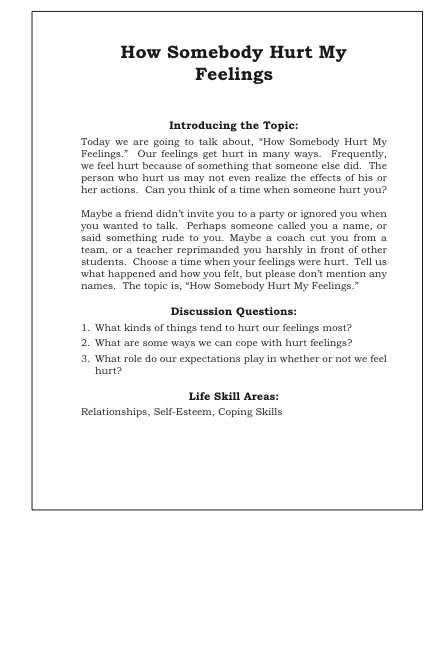
Do you want more information?
• Leading a Sharing Circle
• Sharing Circle Rules
• Books and Resources
• Free Activities
• Subscribe
Go here:
Here’s How It’s Done
Gather everyone into a circle. Explain the rules for sharing, and get agreement from everyone that they will follow the rules.
Sharing Circle Rules:
- Everyone gets a turn to share, including the leader.
- You can skip your turn if you wish.
- Listen to the person who is sharing.
- There are no interruptions, probing, put-downs, or gossip.
- Share the time equally.
After everyone has shared, who wants to share, ask the discussion questions.
You can check the book out HERE.
Just click HERE to open a fully reproducible PDF of this activity and experience sheet…
If you like our blog resources and would like to receive them regularly, please subscribe here or on our website at www.InnerchoicePublishing.com
If you are already a subscriber, I hope you find this activity valuable. Help us grow our blog by sharing these activities and encouraging others to join. Thank you.
Thanks so much for reading!
Susanna
NEW POST – Rules for A Fair Fight
Conflict, violence, and bullying are escalating in schools nationwide. Educators today express unprecedented concern about school and classroom disruptions that steal instructional hours and endanger the safety of students.
Some amount of conflict occurs normally in all schools. However, schools that are large, have limited resources, or serve highly diverse populations often experience pervasive conflict. Outside the school, a corresponding escalation in aggressive and violent behaviors exists in society at large. Our culture inadvertently supports violence through advertising, social relationships, politics, the media, and entertainment.
Keeping the Lid On Conflict
Often, conflicts escalate because students and the adults around them don’t know how to respond to disagreements and confrontations pro-socially and creatively. Peers — sometimes even parents —reward aggressive responses to conflict. These responses are modeled on television and in movies, where even the “good guys” maim and kill in order to “win.” Obviously, our society and our schools are in critical need of people with effective pro-social conflict resolution skills.
This week’s lesson focuses on how to bring a more positive , pro-social aspect to conflict.It has been taken from Conflict Resolution Skills for Teens, a learning guide for middle and high school.
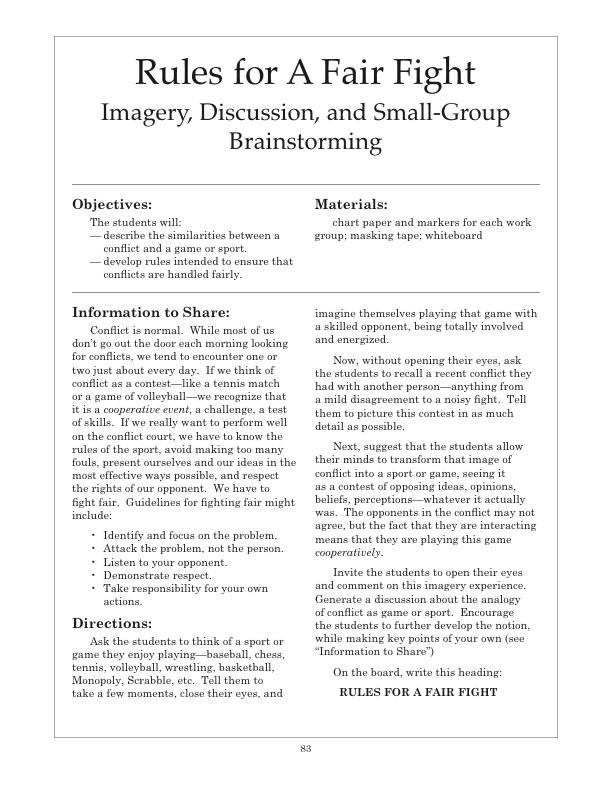
You can check the book out HERE.
Just click HERE to open a fully reproducible PDF of this activity and experience sheet…
If you like our blog resources and would like to receive them regularly, please subscribe here or on our website at www.InnerchoicePublishing.com
If you are already a subscriber, I hope you find this activity valuable. Help us grow our blog by sharing these activities and encouraging others to join. Thank you.
Thanks so much for reading!
Susanna
A Quality of Friendship
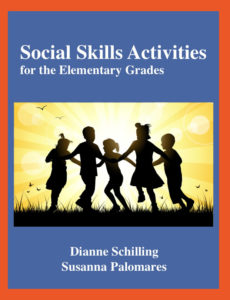
In keeping with our last blog here’s another activity to expand children’s repertoire of friendship skills. Being able to cooperate and give support to our friends conveys how we feel toward and are going to behave with our friends. This is one of the things we DO for and with our friends.
What Friends Do
Once again this week’s activity, Friends Support Each Other, is a cooperative game that comes from our book, Social Skills Activities for the Elementary Grades. Enjoy!
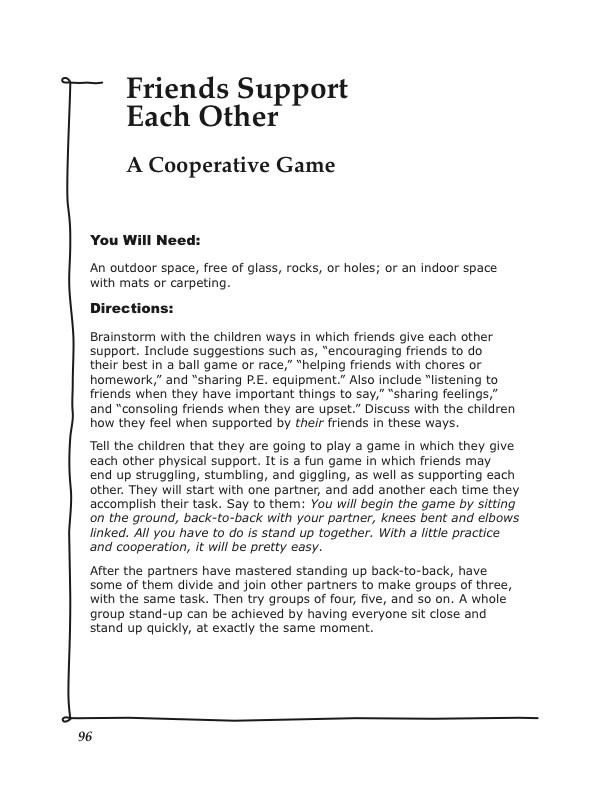
You can check the book out HERE.
Just click HERE to open a fully reproducible PDF of this activity and experience sheet…
If you like our blog resources and would like to receive them regularly, please subscribe here or on our website at www.InnerchoicePublishing.com
If you are already a subscriber, I hope you find this activity valuable. Help us grow our blog by sharing these activities and encouraging others to join. Thank you.
Thanks so much for reading!
Susanna
Active Listening Skills for Managing Anger
Active listening is a wonderful process for helping your students work through upsets to discover exactly what their feelings are.
When we listen actively to our students, two things happen at once. First, negative feelings lessen or disappear after they are expressed and acknowledged in a supportive, nonjudgmental manner, and second, we are modeling and thus teaching students the skill itself.
Active listening helps develop problem-solving skills. As you model and teach active listening, your students begin acquiring the skill, and they become increasingly able to talk through or articulate a problem clearly as opposed to having it just spinning in their heads because they are unable to express it. Through discussion, they are better able to work toward a solution. Active listening also facilitates the growth of a student’s ability to express himself or herself effectively.
A Tool for Today
Today’s lesson teaches the skills of Active Listening and applies them directly to lessening anger. It has been taken from Anger Control And Conflict Management, a learning guide for the elementary grades.
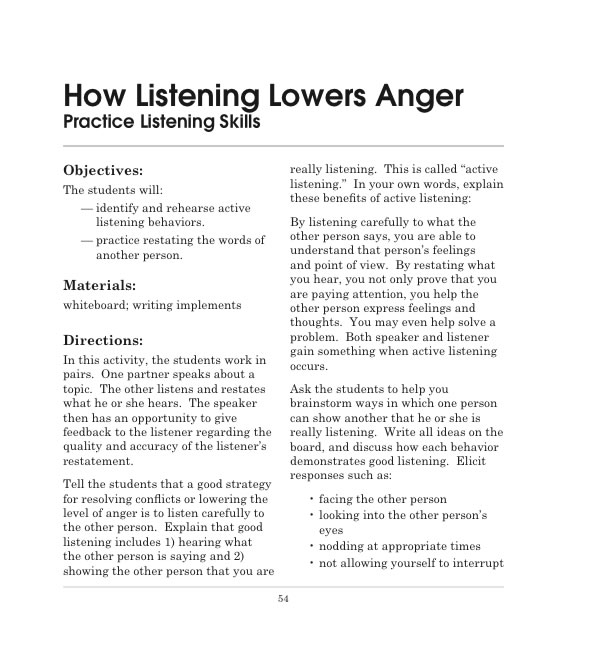
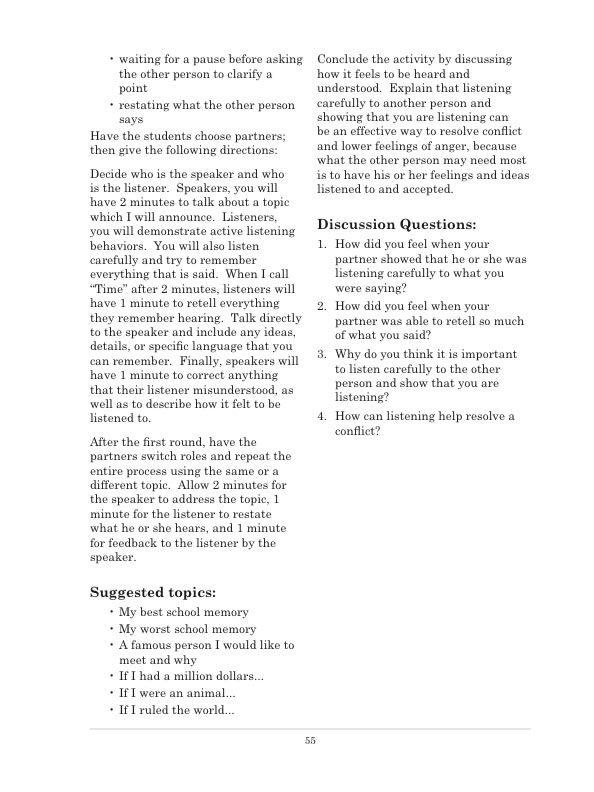
You can check the book out HERE.
Just click HERE to open a fully reproducible PDF of this activity and experience sheet…
If you like our blog resources and would like to receive them regularly, please subscribe here or on our website at www.InnerchoicePublishing.com
If you are already a subscriber, I hope you find this activity valuable. Help us grow our blog by sharing these activities and encouraging others to join. Thank you.
Thanks so much for reading!
Susanna

